
Newsletter Subscribe
Enter your email address below and subscribe to our newsletter

Enter your email address below and subscribe to our newsletter
Introducing Thai basil pesto! Get ready to try something completely different. This recipe will take your taste buds on a flavour adventure. Thai basil grows abundantly in Thailand and is widely available in many Asian supermarkets.
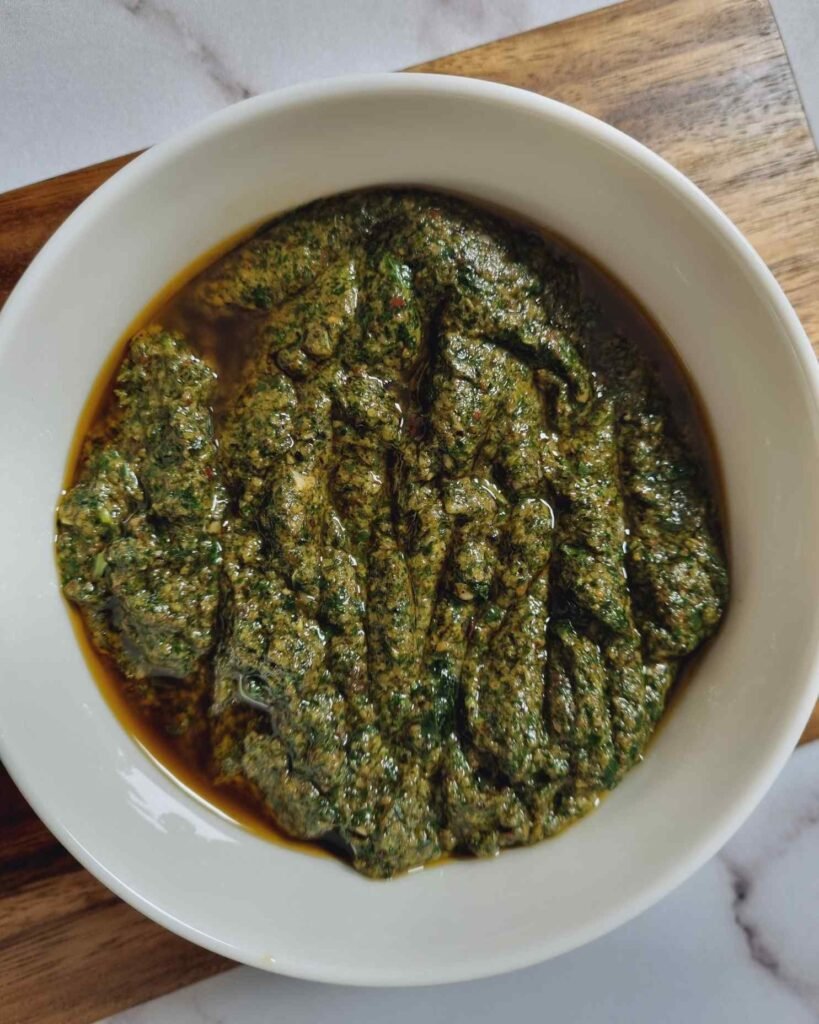
It is also super-affordable compared to regular basil—Italian basil, which is more herbaceous in flavour. Thai basil, on the other hand, has light notes of liquorice and star anise.
This recipe mimics the taste of store-bought Italian pesto but with a Thai influence. If you’re a huge fan of pesto, then get ready to make a considerable amount for future use. This pesto recipe yields 360 grams.
This recipe pairs well with a variety of dishes. It will work beautifully with pasta and provide a fresh take on Italian flavours but with an Asian twist. You can also use it as a marinade for grilled meats or seafood. Spread it on Asian-inspired sandwiches, or elevate your wraps. Drizzle it on top of the pizza.
Almonds, pecan nuts or walnuts, grape seed oil, chili flakes, butter, grated parmesan cheese, rice vinegar, oyster sauce, sugar, and salt.
The Thai Basil has subtle hints of anise and liquorice. In terms of the nuts, use a composition of your favourite nuts. For this recipe, we’ve chosen a combination of almond and pecan nuts, which create a rich, buttery flavour.
Garlic adds a savoury depth, whereas grapeseed oil acts as a neutral base, allowing the other flavours to shine. Chili flakes add a touch of heat.
We’ve chosen Parmesan cheese to add cheesiness, but you can use Pecorino Romano, Grana Padano, or Asiago. There are so many varieties of cheeses with a strong, sharp taste. Rice vinegar cuts through the richness of the other ingredients and balances out the pesto. The last ingredient used was oyster sauce, an unusual choice, but it adds an umami taste and is delicious.
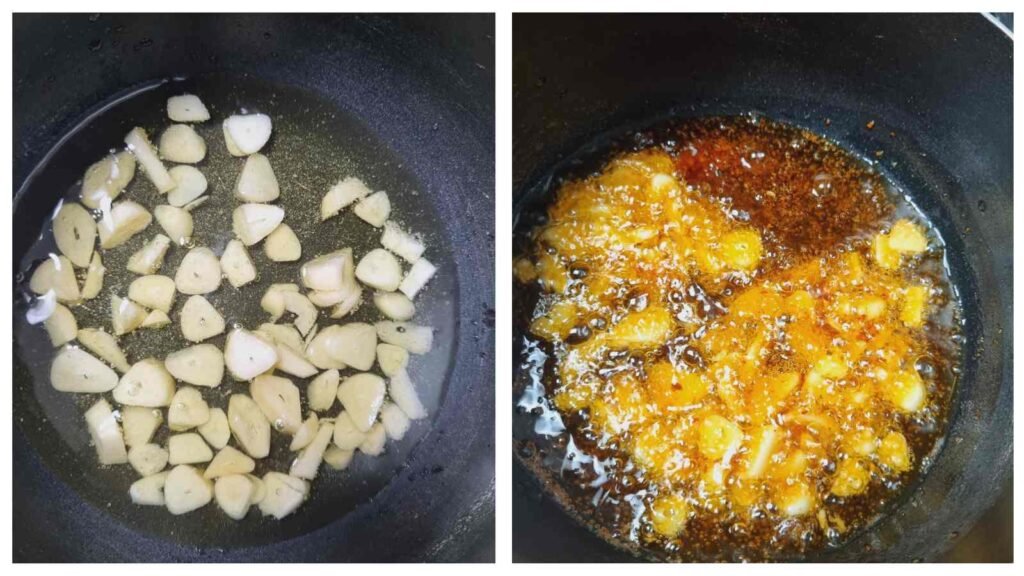
Fry the garlic in chili oil: Slice the garlic cloves and rinse the Thai basil. Pour the cooking oil in a wok and preheat it on medium-low heat. Add the sliced garlic and the chili flakes, and fry the ingredients for two minutes. When it is done, turn off the heat or move the wok away from the heat to prevent the ingredients from burning. Remove the fried garlic and keep the chili oil aside.
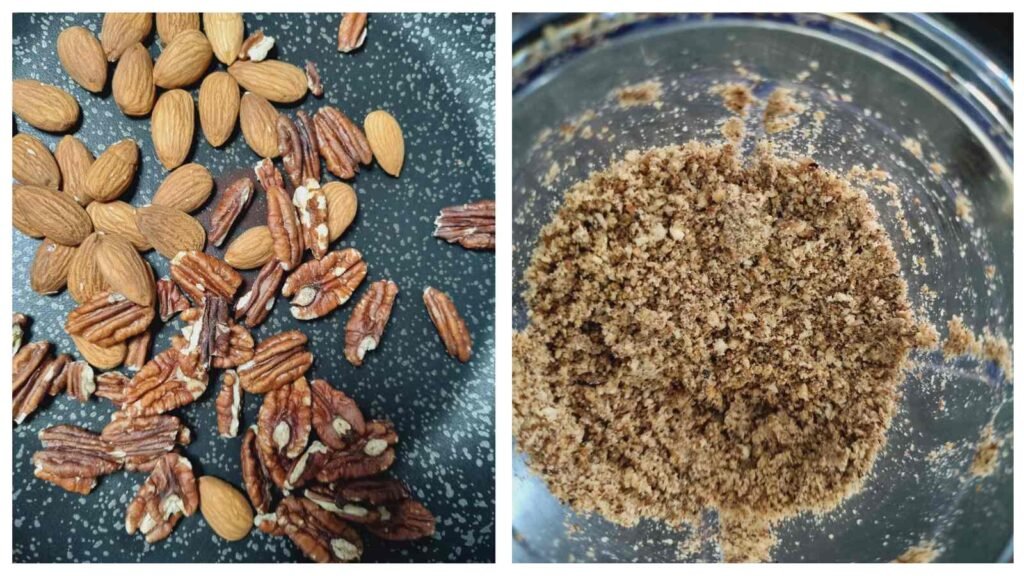
Roast and grind the nuts: Preheat a pan on the lowest heat and add the almonds and pecan nuts. Roast the nuts for less than two minutes, moving them around while roasting. Transfer the roasted nuts to a grinder and grind them into a fine powder.
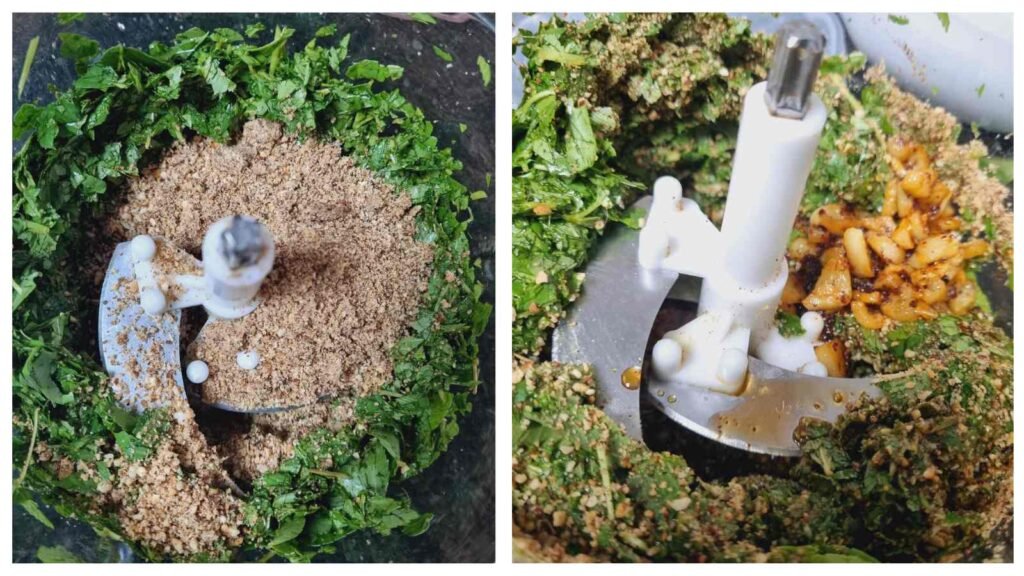
Blend the pesto ingredients: Add Thai basil and fried garlic to the grinder with nuts, then grind all the ingredients together until they become paste-like.
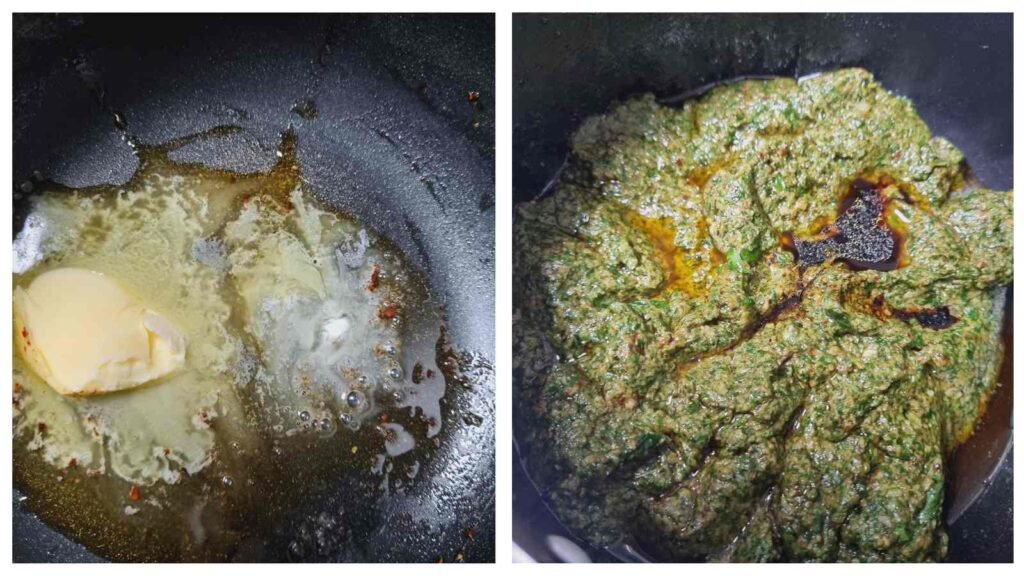
Cook the pesto in butter and chili oil: Adjust the wok containing chili oil to medium-low temperature. Then, add oyster sauce, rice vinegar, butter, sugar, and salt. Stir to mix the butter mixture, and then add the pesto. Cook the Thai basil pesto for three minutes while thoroughly mixing all the ingredients.
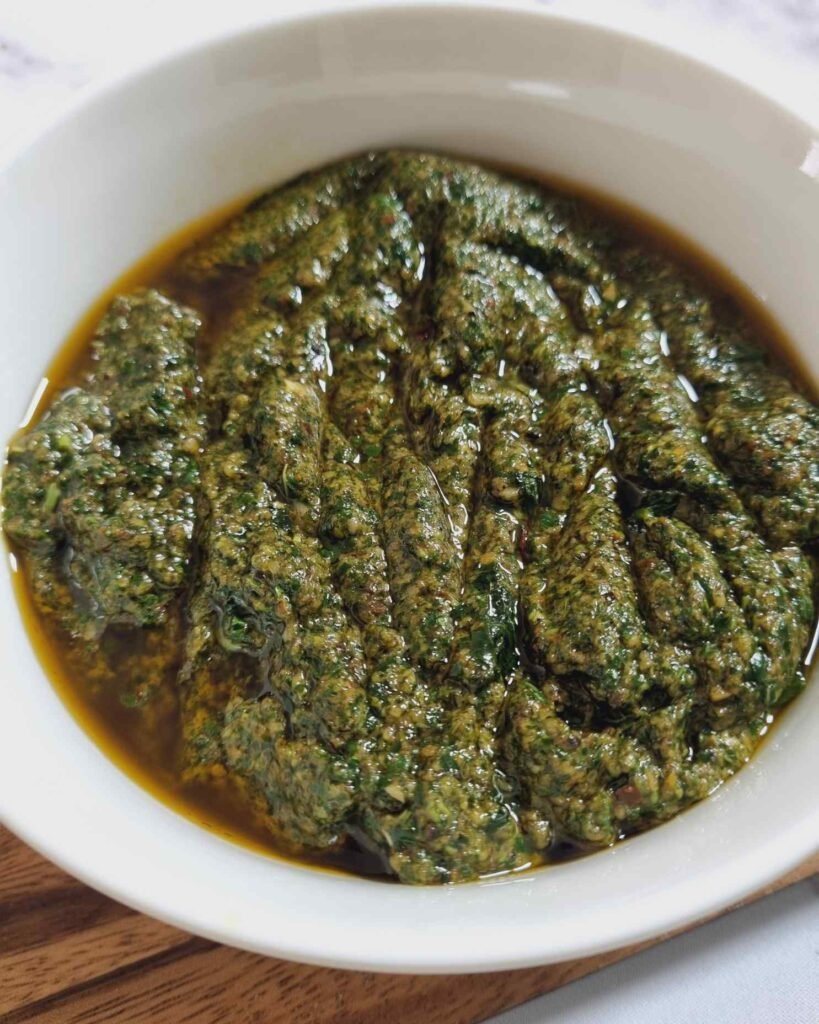
Substitute regular basil with your favourite herbs, such as Parsley, coriander, Italian basil, and Arugula.
The classic option to serve Thai basil pesto with would be pasta. It can be penne, spaghetti, fusilli, or linguini—any pasta that you feel like. This delicious pesto can also be served as a pizza topping or as a spread in a wrap or sandwich made with grilled chicken.
Storing the Thai basil pesto is pretty simple. To keep it fresh and flavourful, you need to use an uncontaminated spoon to transfer the pesto into an airtight container. The pesto can be in the fridge for up to 5 days. However, it can become brown over time. To prevent it from turning colour, add a thin layer of grapeseed oil on top of the pesto. The oil acts as a sealant and prevents the pesto from oxidizing, hence staying fresh and flavourful.
Freezing Thai basil pesto is a great option for people who want quick and easy access to pesto. One of the most effective and convenient ways to freeze pesto is to pour it into an ice cube tray or silicone mold and use the amount required for your next meal. Frozen pesto can last up to three months in the deep freezer.
Reheating is also very simple for the Thai basil pesto. If the pesto was unfrozen in the fridge, simply reheat with the pasta on the stovetop or in the microwave. In cases where the pesto is frozen, pop the frozen pesto from the ice-cube tray and reheat on the stovetop on medium-low heat for 3 to 4 minutes to evaporate the water, and then reheat with pasta. Make sure to thaw the frozen pesto before reheating it in the microwave.
